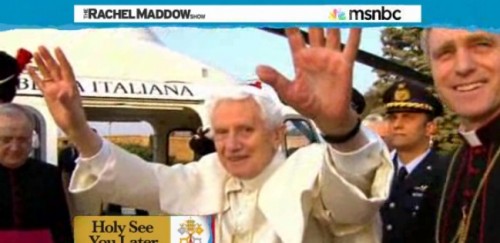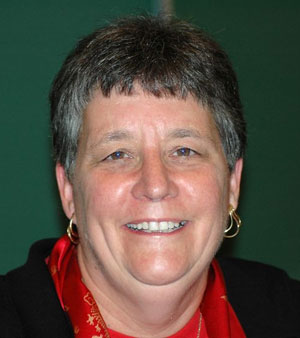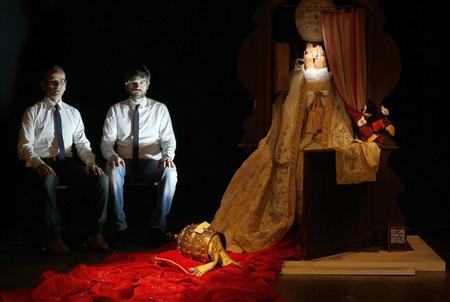Ya gotta love this guy!
By Lisa Wangsness
Cardinal Sean P. O’Malley said Tuesday that the next pope must make sure the Roman Catholic Church adopts measures to deal with bishops whose “malfeasance” allowed abusive priests to remain in ministry.
 O’Malley said in an interview that the successor to Pope Benedict XVI will need to continue Benedict’s campaign to get bishops across the world to adopt policies for dealing with accused abusers. That should include procedures for disciplining bishops who protect abusive priests, said O’Malley, among dozens of cardinals gathered at the Vatican.
O’Malley said in an interview that the successor to Pope Benedict XVI will need to continue Benedict’s campaign to get bishops across the world to adopt policies for dealing with accused abusers. That should include procedures for disciplining bishops who protect abusive priests, said O’Malley, among dozens of cardinals gathered at the Vatican.
The US bishops adopted a zero-tolerance policy on clergy sexual abuse a decade ago, requiring removal from ministry of any priest credibly accused of abusing a minor, but some church leaders have not followed it. The bishop of Kansas City was convicted last fall of failing to report child abuse by a priest, but the church has not sanctioned him.
“There needs to be a path” for disciplining bishops, O’Malley said. “Right now, it’s not terribly clear, but it’s something the next pope will have to deal with.”
Without a protocol in place, he said, it falls to the Vatican to decide what to do with each errant bishop on a case-by-case basis. “My point is always that if you don’t have policies, you’ll be improvising, and when you improvise, you make a lot of mistakes,” he said.
‘There needs to be a path’ for disciplining bishops. ‘Right now, it’s not terribly clear.’
The Roman Catholic archbishop of Boston discussed some of the issues at stake in the papal election in a brief interview Tuesday in a corridor of the Pontifical North American College in Rome, a peaceful hilltop seminary about 10 minutes by foot from the Vatican.
O’Malley is among the US cardinals staying there before the conclave. Once voting begins, the cardinals will move to lodgings within the Vatican and remain isolated from the world until they elect a pontiff.
The conclave is held in the Sistine Chapel, which closed at 1 p.m. Tuesday so that work crews could begin installing a raised floor, under which they will put antibugging devices, and the stoves in which the ballots will be burned.
O’Malley, who during the interview wore a gray cardigan over his hooded brown habit and blue socks peeking through his sandals, spent the morning in one of a series of meetings the cardinals are holding before the conclave, called general congregations, in which they discuss issues facing the church.
Being part of the papal process is “surrealistic,” he said, but also moving.
“Growing up a Catholic and knowing a little bit about these traditions and the way the Holy Father is selected in the church — it’s a far cry from seeing it up close and being part of it,” he said.
O’Malley also seemed to ache for a little down time. He had just finished a long press conference and had more reporters to speak with before a dinner with cardinals. He said he had not been able to spend much time going out to dinner or otherwise enjoying the city. “If I didn’t have all these interviews,” he said with a laugh, “I could be in a bookstore right now.”
Yet the shy O’Malley seemed at ease at the press conference. He said that after almost 30 years of being a bishop, he had grown accustomed to being the face of the church and interacting with the press. “It’s not always easy, but it’s important; it’s the way we can communicate with the largest number of people,” he said.
He has been highly sought after by the Spanish-speaking press because of his fluency in the language and his work with the Hispanic community in the United States and with the church in Latin America.
Asked in the Globe interview what he was looking for in a potential candidate, O’Malley said the next pope must “relate well to the universal church.” The Catholic Church is growing quickly in Africa, and more than 40 percent of the world’s Catholics live in Latin America.
He said Benedict’s successor also needs the spiritual and intellectual capacity to deal with the church’s many challenges. Governance of the Vatican, he added, is also an issue.
“We want the Holy Father to have a good team of people around him in a way that will support his ministry and allow him to focus on his teaching office, which we see as so important,” he said.
O’Malley has been deflecting a lot of questions lately about the possibility he could be a contender for pope. Most Vatican analysts consider the notion of an American pope a long shot, but some say that O’Malley’s chances could improve if there is no consensus after a few days of voting.
One reporter at the news conference said she had a question from her daughter: Would O’Malley continue to wear his “cappuccino robe” if elected pope? O’Malley, a Capuchin friar whose order’s name derives from the brown hooded habits its members wear, blushed and chuckled with his audience.
“I have worn this uniform for over 40 years, and I presume I will wear it until I die, because I don’t expect to be elected pope,” he said. He stammered slightly. “So — I don’t expect to have a change of wardrobe.”
The press conference focused on the general congregation meetings, a tricky subject, because the cardinals take oaths promising not to reveal the content of the discussions to outsiders.
As described by cardinals and Vatican representatives, there is little back and forth in these sessions. Cardinals sign up to speak and essentially make speeches without debate.
A half-hour coffee break gives the cardinals time to chat informally. Cardinals who are over 80 years old — the cutoff for being eligible to vote in the conclave — are invited to join the general congregations.
Cardinal Daniel DiNardo, the archbishop of Galveston-Houston, who presided alongside O’Malley at the press conference, said the congregations were “pretty serene — it’s not campaign-like.”
The College of Cardinals has not yet set a date for the conclave, nor have cardinals decided when they will set a date. All electors must be present for the date to be set, and a Vatican representative said 5 of the 115 electors were not yet in Rome. Church law requires the conclave to begin no more than 20 days after a papal vacancy.
O’Malley said the cardinals want to be sure they allow themselves enough time to weigh issues and contenders before the conclave to make sure the voting itself does not “drag on.” All the conclaves in the last century have ended within five days; in earlier centuries, some voting sessions lasted for months or even years.
O’Malley and DiNardo said cardinals who, like themselves, were in charge of dioceses, hoped to return home by March 24 for Palm Sunday, the beginning of Holy Week. But they said the prelates do not want to rush. “This is the most important decision that some of us will ever make, and we need to give it the time that’s necessary,” O’Malley said.
He told the National Catholic Reporter Sunday that he hoped the cardinals would meet twice a day every day this week to move the process along. But Tuesday the cardinals decided against meeting twice that day, and they plan on meeting only during the morning Wednesday. O’Malley smiled a little tightly when asked about that. “This is Rome,” he said.
Complete Article HERE!




